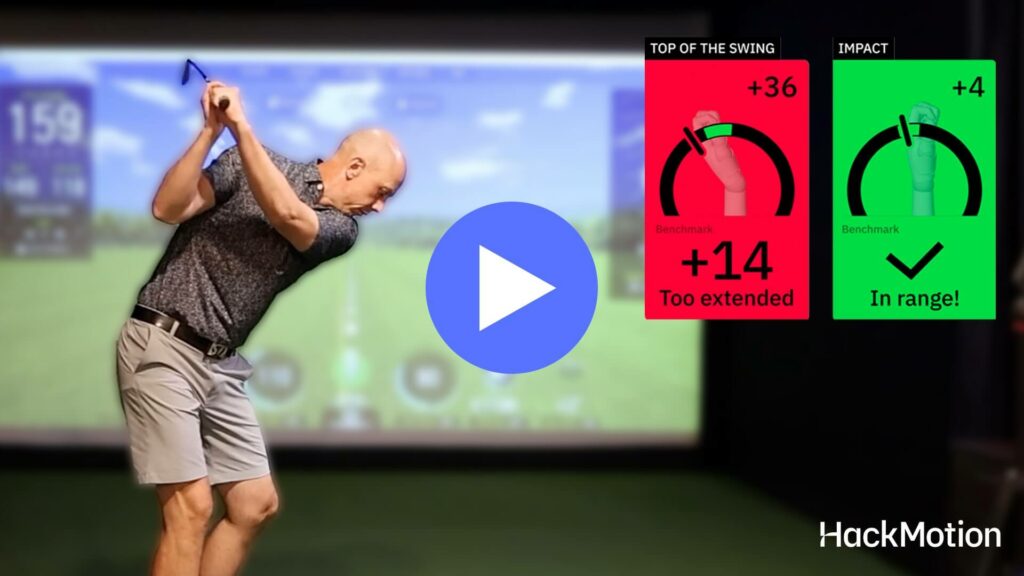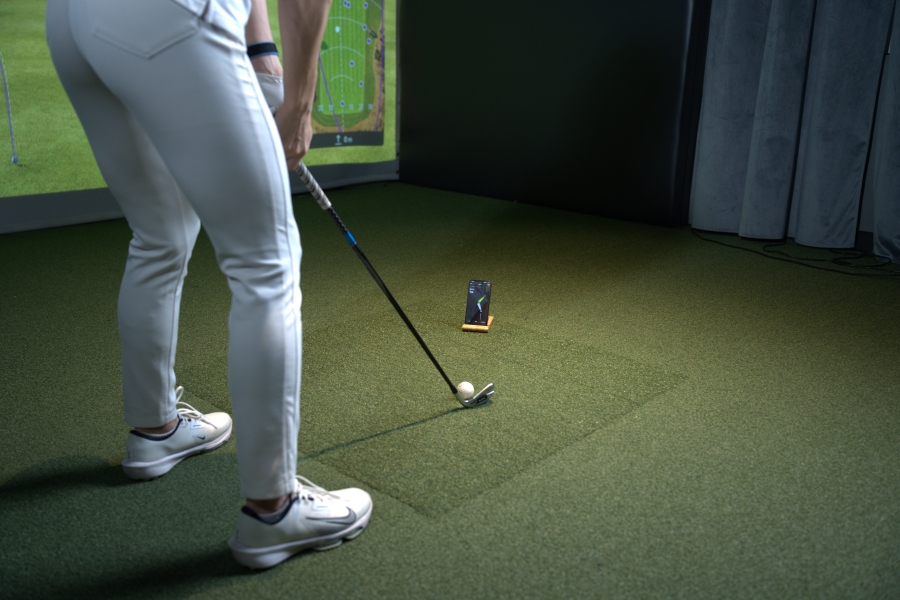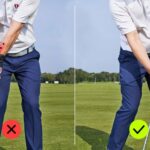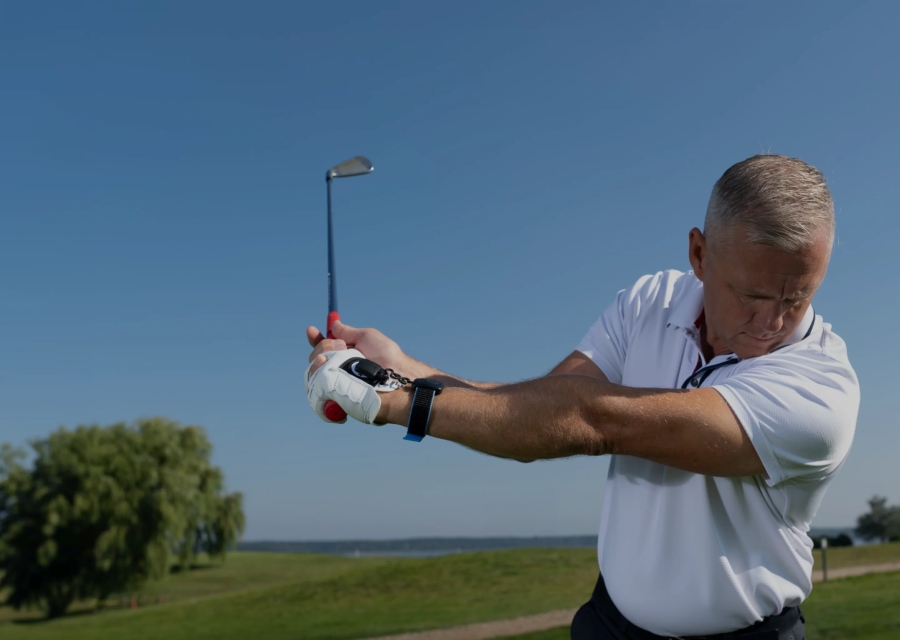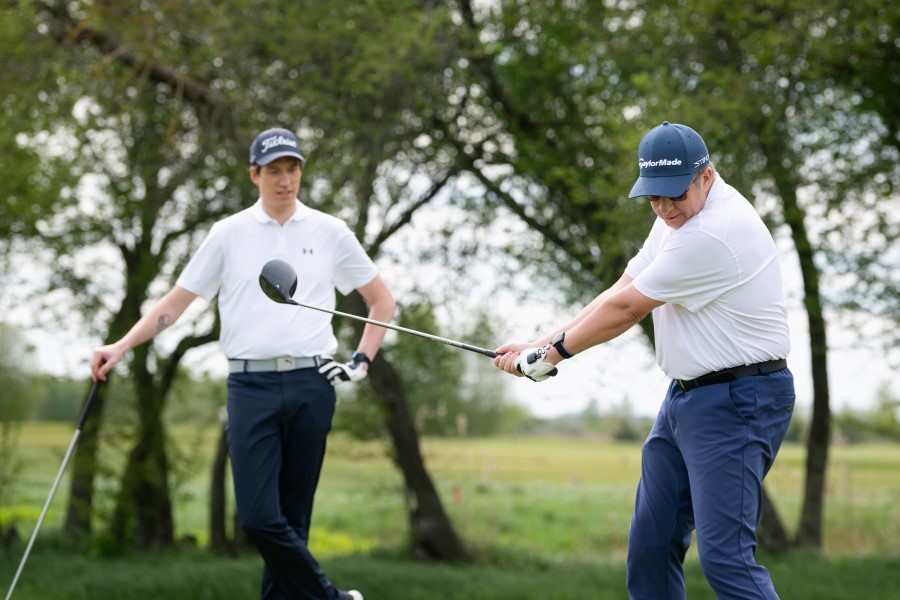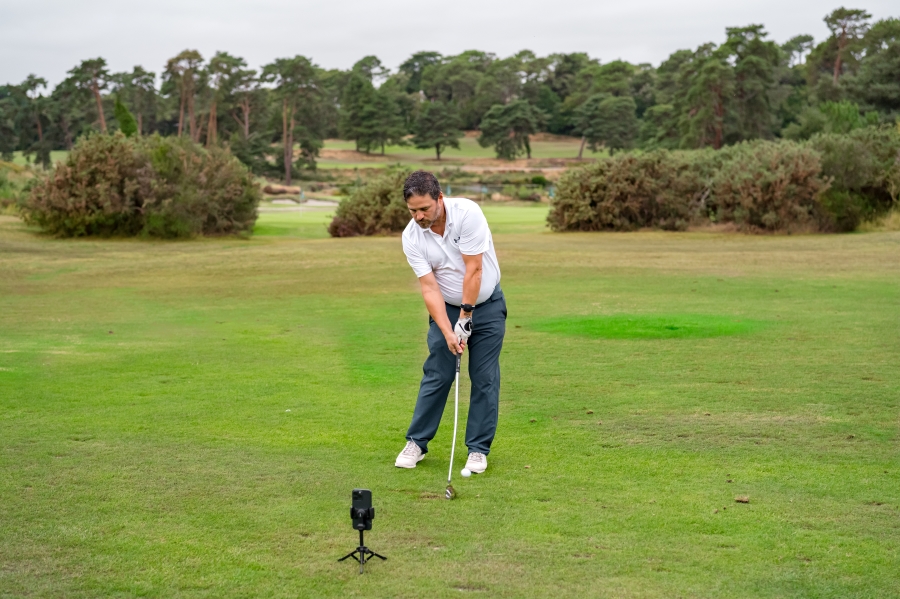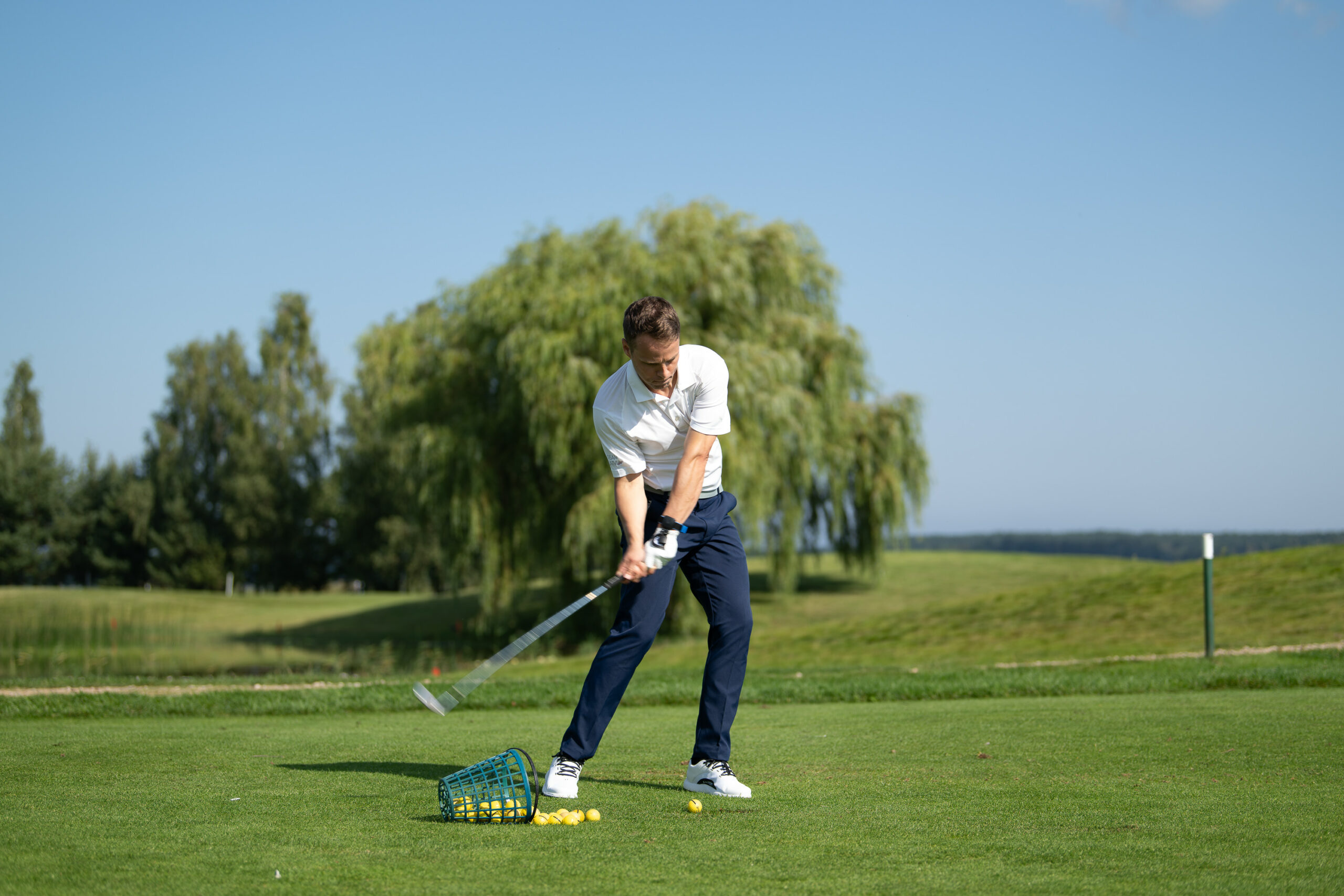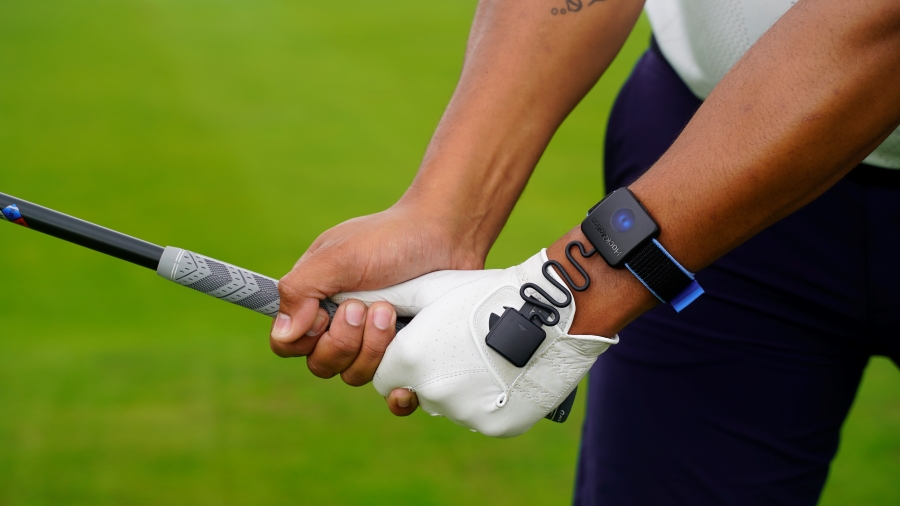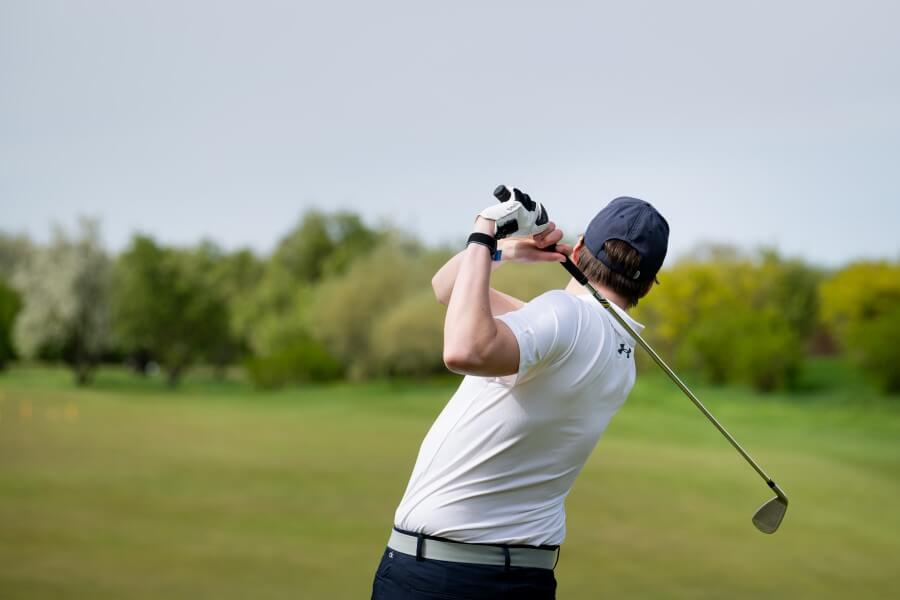How to Hit a Stinger Shot: 5 Tips & Drills to Hit Shots Lower and Further
Tiger Woods has made the stinger shot one of the most famous in all of golf. He has done for the stinger what Phil Mickelson has done for the flop shot. However, a stinger is much more useful to the average golfer than a flop shot and therefore should be a part of every golfer’s shot library.
Below is detailed information on understanding the shot from a physical view, as well as drills to help quickly ingrain the new feeling of swinging differently to create this low and penetrating ball flight.
Take these tips and drills to the range with you next time so you can start taking advantage of the stinger shot and lower your scores.
How to Hit a Stinger (Key Takeaways)
The stinger can be a frustrating shot to learn as it requires a particular set of adjustments to truly reap the benefits. Be sure to review these key points before practicing the stinger to understand how the shot should be executed.
- Adjust your setup by standing taller, narrowing your stance, and moving the ball back in your stance.
- Keep the backswing compact and controlled.
- Optimize wrist positions throughout swing, but especially at the point of impact.
- Solidify an in-to-out swing path.
- Keep the follow-through low and controlled.
Prefer watching over reading? Check out the video below on how to hit a stinger shot in golf.
Contents
5 Tips to Hit a Stinger Shot in Golf
Employing all of these tips will give you the foundation you need to practice this shot effectively. These minor adjustments make all the difference when trying to master the difficult stinger shot.
Adjust Your Stance at Address
Hitting a successful stinger shot starts before you even draw the club back. You must prepare your body and swing to operate in such a way that the club can enter the impact zone correctly.
Making these small adjustments may seem minor, but it’s the combination of them that makes it work.
- Spine Angle—Stand up straighter so your hands are an inch or two closer to your body. This will force the shaft upward as well, so your body can stay on top of the ball.
- Feet Position—Move your feet closer together by a few inches. This will help you stand taller and also produce more rotation around your body, preventing your swing from becoming too steep.
- Grip—Ensure that you can see two knuckles on your top hand at address. If you see more than two, the face will be too closed at impact. Two knuckles also help keep your lead wrist neutral if you don’t have a Hackmotion to monitor this for you.
- Ball Position—Move the ball back in your stance one ball width. This ensures you are still swinging down on the ball and will almost eliminate the chances of hitting it thin.
Compact Backswing
A stinger is not a punch shot. Punches are more niche and almost exclusively used to get out of trouble.
One of the main differences between a stinger shot and a punch shot is the length of the backswing. The stinger shot is still considered to be a pretty full swing.
Golfers should use the stinger to maximize distance and position themselves effectively on the course. However, to create the lower ball flight we need, it’s best to keep the swing at about ¾ length.
Everything should be the same as your normal backswing, just with less exaggerated movement. Your torso fully rotates, your wrists are hinged, and your weight is balanced.
You can use Hackmotion to ensure your whole body is in the right position. Hackmotion sensors monitor more than just your wrists at the top of the swing; it’s a comprehensive game improvement system that’s like having an expert golf coach right there with you.
Utilize Wrists Correctly
Your wrists play an essential role in all positions of an effective stinger swing. When your wrist comes into the impact position, the angle ensures that your hands are in front of the golf ball.
If your wrist is behind the golf ball, it angles the clubface up, resulting in a higher-lofted shot, which is not what we need for the stinger.
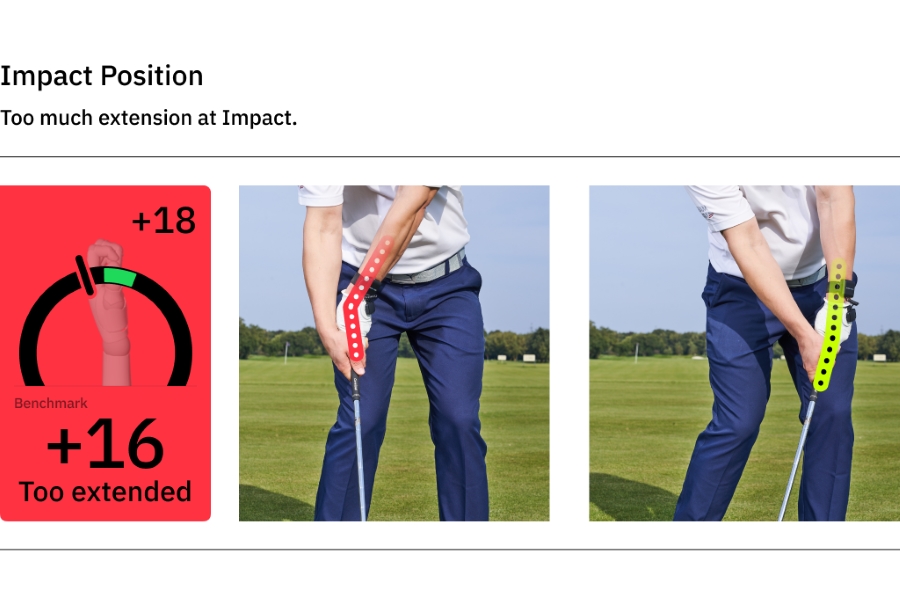
Understanding the relationship between the wrist and the club head in the stinger shot can take some time to grasp.
Using Hackmotion is the best way to expedite the learning process, but as long as you follow these key points, you will be able to add the stinger to your arsenal.
- Neutral wrist at setup, showing two knuckles on the top hand.
- Hinging wrists without flexing or extending in the back swing.
- Maintaining wrist hinge (or lag) until the last split second before impact.
- Fully releasing along the target line while keeping hands low.
In-to-Out Swing Path on the Downswing
A fading stinger shot is one of the toughest shots to pull off in all of golf, so it’s best to focus on creating draws. To do this, an in-to-out club path is needed as your club approaches the point of impact.
Swinging along an in-to-out path keeps the shaft flat and makes it easier to de-loft the club. This will also be made easier with a ball position that is slightly back in your stance.
Creating an inside-out swing path involves focusing on full torso and lower body rotation in the backswing, while ensuring your wrists are in the correct position.
If you’re using Hackmotion and find yourself off path, the sensors will be able to tell you exactly where you went wrong and suggest specific drills to get your club swinging along the correct path line.
This video provides a detailed explanation of how to get your club on the right path by using your body and wrists effectively.
Low and Abbreviated Follow Through
The last, but still very important, aspect to hitting a successful stinger shot is to finish in a controlled, muted, and balanced manner. Avoid hanging back in your swing at all costs.
You still want your torso and hips to be facing the target with your weight fully on your front foot, but instead of your hands finishing behind your head, they will stop at or below shoulder height.
This is to create an exaggerated feel of keeping your hands ahead of the ball, so the club face is square and slightly delofted. High finishes mean high ball flight.
Using standard follow-through drills is a great way to learn how to keep your hands low while still hitting all the correct positions to create solid and controlled contact.
Drills to Master the Stinger
Individually, these drills won’t help you hit a stinger, but if you combine them with the sole purpose of creating a penetrating ball flight, then you’ll have success.
4:30 Path Drill
Creating that coveted in-to-out swing path ensures your clubface is neutral or slightly closed at impact. It’s also crucial for keeping the plane flat to avoid any balloon shots.
Many golfers who are just starting out fall victim to the ‘chicken wing,’ which robs them of power and consistency. It also makes it nearly impossible to hit a stinger.
This drill helps get your body in sync with your arms to attack the ball from the inside, using a neutral angle of attack and swing plane.
- Video Timestamp: 5:10-6:51
4:30 Path Drill – Step by Step
- Address the ball with your normal stance and imagine you’re standing in the middle of a clock where 12 o’clock is the ball.
- Lay a club or alignment stick down, pointing at 4:30 on your imaginary clock (next to your back foot).
- Take practice swings such that on your downswing, your club shaft is parallel to the alignment stick on its way to the ball.
- Most golfers will be outside, so it will be a very different feeling to get your club in line with the alignment stick.
Slow-Motion Progression
When learning an intricate shot like the stinger, it pays to take things slow. Teach your body the proper positions deliberately, and it will become easier to find those positions at top speed.
This drill focuses on the impact zone and how your wrists contribute to it. Using Hackmotion here will give you a huge advantage because it measures the smallest movements in your swing and alerts you if you’re off track.
This is also a great drill to do when you warm up before a round as a reminder to your body how you want to impact the ball.
- Video Timestamp: 3:56-5:57
Slow-Motion Progression Drill – Step by Step
- Start with your usual stance by addressing a ball.
- Before taking your backswing, mimic where you want your body, weight, and wrists to be at impact.
- Slowly work your swing backwards to the top of the swing and then slowly return the club to your chosen impact position.
- Follow through slightly to inform your body what to do after you strike the ball.
Towel Contact Drill
Making solid contact is the cornerstone of hitting effective stinger shots. Even if you have the best setup and hit all the right positions, you won’t get the results you want unless you strike the ball cleanly.
This drill specifically targets how your club enters the impact zone and trains your body to recognize the sensation.
You can use this drill with Hackmotion and all your irons as well to dial in your consistency and reduce the amount of mishits you encounter during a round.
- Video Timestamp: 1:05-3:46
Towel Contact Drill – Step by Step
- Start by laying down a small towel or head cover about six to ten inches behind a ball (opposite your target).
- Take your normal stinger stance and start with a small swing to strike the ball without touching the towel.
- Gradually work your way up to full swings (¾ for stinger shots as mentioned above) and move the towel closer to the ball as you improve.
- Monitor your divots to ensure they are not too deep. If so, revisit the ‘4:30 Club Path’ drill to flatten your swing without sacrificing the quality of contact.
Learn From Tiger Himself
Admittedly, Tiger makes this look effortless. He has incredible control over his body positions throughout his swing, so making minor adjustments comes naturally to him.
Check out this video to watch Tiger hit a stinger. As he mentions in the video, hand and wrist position are crucial, so having a Hackmotion system will be a significant help in learning this shot.
FAQs
Which clubs can I use for a stinger?
Although it’s possible to hit a stinger with nearly any club, many players achieve the best results when using their longer irons, such as the 3, 4, or 5-iron
These clubs allow for greater control of trajectory and distance, making it easier to keep the ball low and running.
Can you hit a stinger with a driver?
Yes, you can hit a version of a stinger with a driver, but it’s not recommended.
Drivers these days are not designed for this, as their primary purpose is to increase the launch angle to maximize carry and distance.
If you need to hit a tee shot under the wind for maximum distance, golfers will find more success by using their 3-iron.
What is the difference between the stinger shot and the punch shot?
The stinger shot is typically played with a longer iron and is designed to travel a significant distance while maintaining a very low ball flight. The main goal of a stinger is to maximize distance and control, especially in windy conditions or when accuracy off the tee is crucial.
The punch shot, on the other hand, is generally used to escape trouble, such as from beneath trees or in windy conditions where height needs to be minimized even more. The main purpose of a punch shot is to keep the ball under obstacles and get it back safely into play, rather than to maximize distance.
If your stingers keep coming out too high or inconsistent, work with a golf training coach who uses HackMotion to help golfers control their wrist angles and ball flight.
Final Thoughts
Adding the stinger shot to your repertoire will give you more options off the tee and allow you to shoot more consistent scores despite poor conditions. Using the tips and drills above gives you a head start on your competitors, but it will take a few sessions to get the hang of it.
Using Hackmotion in combination with theory and practice time will accelerate the learning process, enabling you to start using this shot in competition sooner. The Hackmotion app will track your progress and ensure you continue to make positive changes while also maintaining your swing.
Having Hackmotion is like having your own personal golf instructor, who is there to make suggestions and teach you new shots, such as the stinger, to lower your scores and make the game even more enjoyable.

